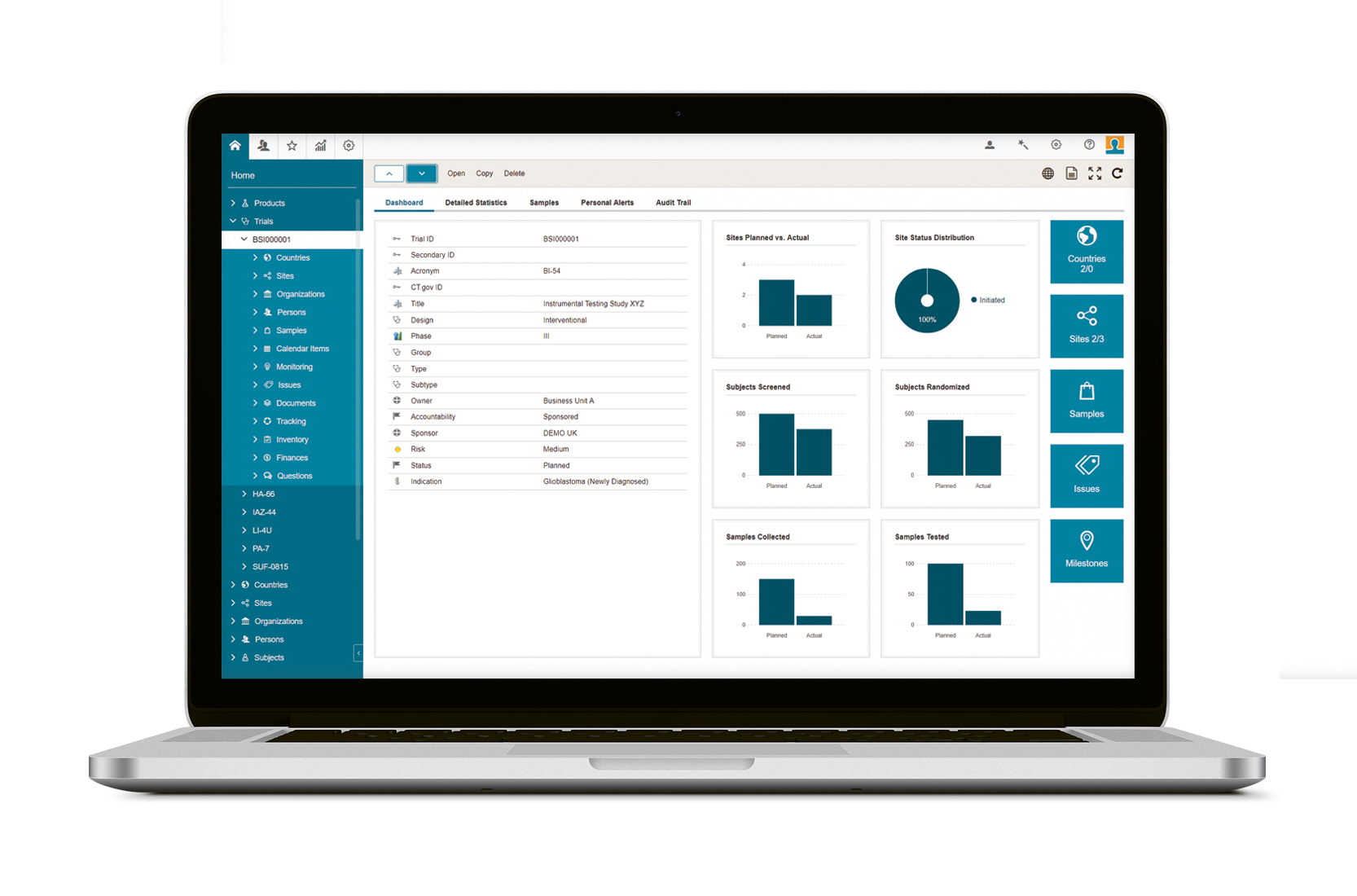Fresh-cell therapy for the existing CTMS
The dilemma of the pharmaceutical company was a welcome challenge for BSI. “The users, in particular the CRAs (Clinical Research Associates), had been frustrated for a long time by the complex and difficult user interface,” explains Jan Klint Nielsen, project manager at BSI. “The training efforts were very high and the user acceptance very low,” says Nielsen. “You never want to experience this situation with a software product. We knew we could help.”

Open Source as an opportunity
The CTMS team went to work immediately. “Our software is based on an open architecture. From the very beginning, we knew that we could offer a modular solution that would help bring key functionality which we could overlay onto their existing architecture,” explains CTMS system architect Stefan Vogt. Surprisingly, many systems are de- signed exclusively for interaction with other applications of the manufacturer: “This allows software companies to bind the consumer to their software, which can lead to changes becoming very expensive,” says Nielsen who adds: “We always advise our clients to invest in applications built with an open architecture for easy integration of other systems. It supports innovation and will allow you to evolve as your needs change.”
Seamless integration
In this case, the customer could benefit from BSI’s open architecture platform. With some creativity and a healthy dose of teamwork, the BSI team developed an individual monitor visit module and integrated it directly into the customer’s existing clinical platform. The new module works seamlessly with the existing CTMS, ensuring a better user experience and higher data quality.
The result is a best-case scenario for the customer. “We were able to add features that improve our monitor visiting process without having to overhaul our entire software infrastructure – which was just not possible at this time,” said the customer.

High adoption rate equals better data
The results were impressive. Adoption was fast and broad. User satisfaction is demonstrated by the fact that the tool is now used regularly. This in turn means fewer sources of error. In fact, the software worked so well that the customer asked BSI for another modular function: a tool for patient recruitment. Once again, an area that was undersupplied by the customer’s current CTMS was optimized by the BSI team. With the new web-based tool, research leads around the globe can now plan the recruitment of patients for clin-ical trials. The tool delivers the data directly to the data warehouse, which enables all qualified users to recruit patients precisely at any time.
Like the monitor visit module, the patient recruitment mod- ule provides the BSI signature-intuitive user interface which simplifies process – while allowing the user to have a bird’s-eye view of all the trials being conducted worldwide.
“With the rollout, we made it possible for employees worldwide to work simultaneously with a web-based tool,” ex-plains Nielsen. The client is also delighted. “The new patient recruitment solution is easy to use and enables efficient patient planning for clinical studies. Employees benefit from consistent updates and automated reports, and planning can be easily recorded, controlled and evaluated,” says the customer’s project manager.
“We make it possible to integrate functions into the existing architecture.”
Stefan Vogt, CTMS system architect at BSI
Cost-effective enhancement
BSI sees the experience gained from the project as an opportunity: “Many companies currently living with substandard technology could benefit from our software,” explains Nielsen. “With its modular technical structure, BSI CTMS can be integrated seamlessly and cost-effectively into the existing system landscape, either as a complete unit or as a single part. By complying with technical standards such as SOA or Java, both adaptations to new or changed processes and interfaces to other systems are easy to handle,” says Nielsen.
